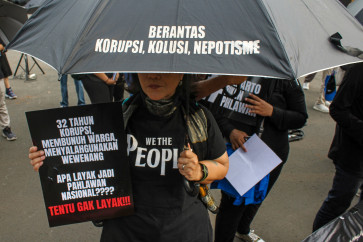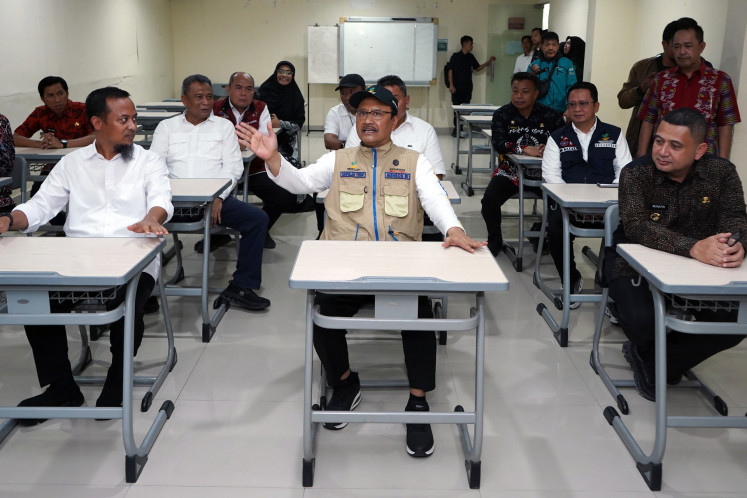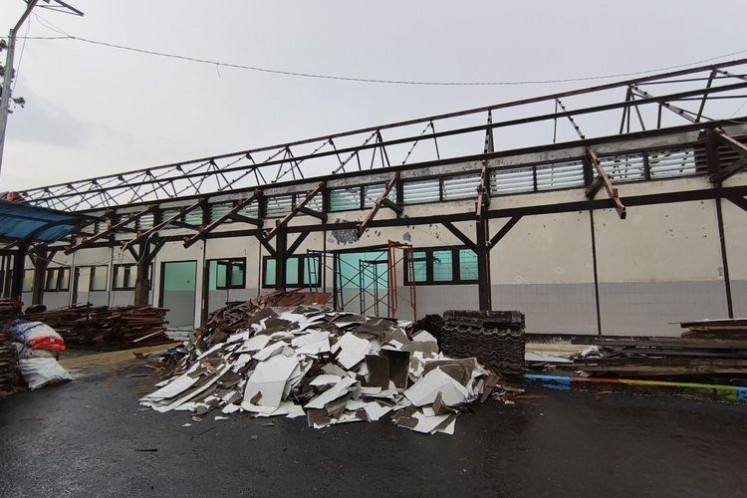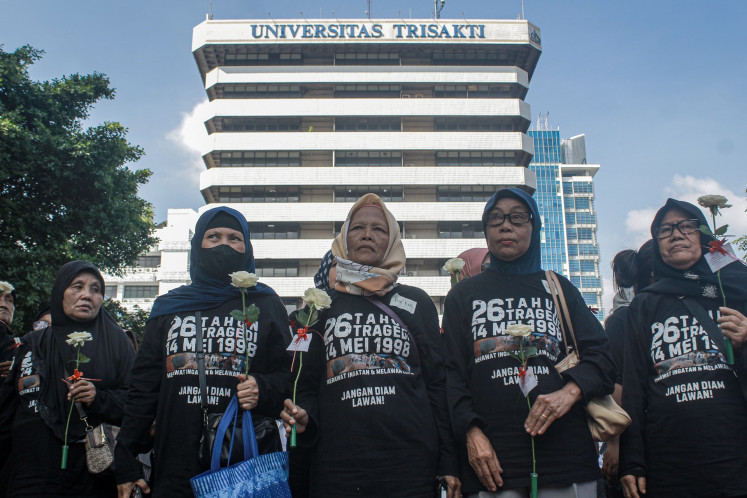Jokowi has to spend $120 million a day
Having spent only about 20 percent of its 2015 capital expenditure budget by mid-August, the government of President Joko âJokowiâ Widodo seemed to have performed worse than the previous administration, which spent 30 percent of its budget in the same period last year
Change text size
Gift Premium Articles
to Anyone

H
aving spent only about 20 percent of its 2015 capital expenditure budget by mid-August, the government of President Joko 'Jokowi' Widodo seemed to have performed worse than the previous administration, which spent 30 percent of its budget in the same period last year.
Failure to effectively disburse capital expenditures is deplorable because it will hamper development and growth by delaying major infrastructure projects, but it also shows poor managerial capacity, especially in planning and execution. With less than four effective months left until the end of the 2015 fiscal year, President Jokowi and his Cabinet need to work harder.
The remaining 80 percent of the capital expenditure is about Rp 200 trillion (US$14.3 billion). This means that on average about Rp 1.67 trillion ($120 million) will have to be spent per day until the year-end. Such huge spending is simply unthinkable, given the inadequate institutional capacity of the government.
However, this is actually not an impossible mission, provided Jokowi and his Cabinet are willing to change their approach in managing the state budget. It is not that the problems are still unknown. Rather, it is that their solutions so far have been conventional: another meeting, another general instruction.
In Cabinet meetings, President Jokowi urged ministers to prioritize budget disbursement in their respective bureaus, but how?
Some ministers have spoken to the press, disclosing that the hurdles they are encountering are conflicting regulations, ambivalent procedures and overlapping authorities, but what's next?
An issue regarding budget disbursement is not something new for our government.
The previous administration, under president Susilo Bambang Yudhoyono, had also been aware of the same situation. Yudhoyono established an ad hoc team of professionals with no political affiliation who were to report directly to him and summon ministries, agencies and even local jurisdictions all together when the realization of a major project got stuck.
What he did was fairly effective. The team was able to mediate issues between stakeholders: from helping those who had been having difficulty scheduling a time to meet, to aiding stakeholders to coordinate and get things done.
Many capital expenditure projects require multi-institution consensus, in contrast to a ministry's routine expenditure for personnel salaries or goods and services. For example, consider a highway construction project. It may need multiple approvals from the Public Works Ministry, the Transportation Ministry, the National Land Agency and local administrations, among others, in order to be realized.
Therefore, good coordination through the aforementioned team is important to overcome multi-institution bottlenecks. Any disputes over regulations, procedures, or overlapping authorities that stand in the way of project implementation can be removed immediately. In light of this fact, President Jokowi has to strengthen the inter-ministerial coordination for the execution of the investment budget.
Simultaneously, President Jokowi should also improve transparency with respect to the state budget realization. The objective of such a transparency policy is to eliminate the asymmetric information between taxpayers and the government. In this case, people would be content to know how much of the budget is given to each ministry and what percentage of it has been disbursed by the end of every month.
Needless to say, the information must be accessible to the public, be it through the government website, the state radio broadcast, or a town hall's information board.
Transparency is a game changer. It will not only prevent corruption, but also create strong incentives for ministers to spend the state budget accordingly. In return, they will get commensurate acknowledgment from the public. On the other hand, those who do not perform will be shamed, for the public will notice when their money is mismanaged.
It is only a few hours before the night is over. The time is not in the side of the government. Finally, it is up to the government whether the money is going to be spent for development and growth, or to remain idle for the rest of the year.
______________________________
The writer is a master of public policy student at the University of Chicago, Harris School of Public Policy.









